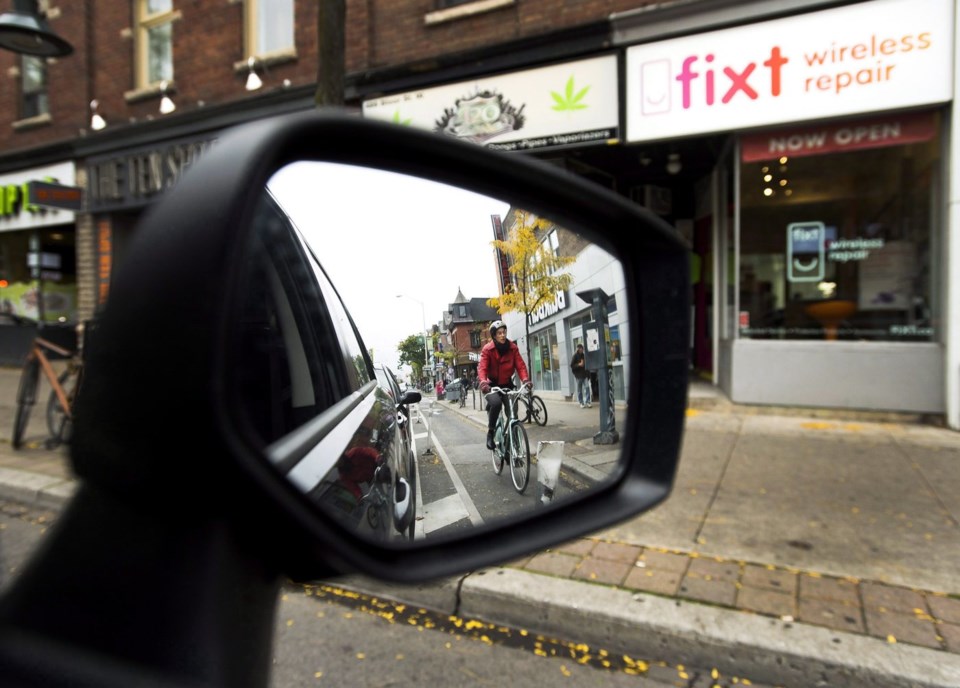TORONTO — Ontario cities would have to seek the province's permission to install new bike lanes that remove lanes of vehicle traffic under upcoming legislation, the transportation minister announced Tuesday.
Too many drivers are stuck in gridlock as a result of bike lanes installed during the COVID-19 pandemic, and the process is "frankly, out of control," Transportation Minister Prabmeet Sarkaria said at a press conference.
"When strategically placed, bike lanes are a vital part of every city, offering residents a safe and reliable way to move around," he said.
"What cities should not be doing, however, is taking away lanes of traffic on our most congested roads."
The first government bill to be introduced when the legislature resumes sitting next week will focus on tackling gridlock, the province said. It is expected to contain a requirement that municipalities receive provincial approval for certain bike lanes and demonstrate the proposed bike lanes won't negatively affect vehicle traffic.
Premier Doug Ford, who lives in the west end of Toronto, has complained about bike lanes that were installed on Bloor Street West, saying the street is jammed and first responders are having a hard time getting through the congestion.
"There's a petition just in Etobicoke for 50,000 people signing to get rid of these bike lanes," he said last month.
"You might see four or five bikes as you see traffic lined up all the way down the road for kilometres and kilometres. ... It's an absolute disaster."
Sarkaria, who made his announcement Tuesday with the Bloor bike lanes as a backdrop, said the province is not ordering the removal of those lanes at the moment, but is asking for more data and pausing the installation of any new, similar bike lanes.
A City of Toronto report on an earlier stretch of bike lanes on Bloor, which were added in 2016 as a pilot project, found that collisions and near misses with cyclists decreased, the number of cyclists increased by 56 per cent, customer spending at area businesses increased and vehicle volumes decreased, while drivers' travel time increased.
The city's report said that travel time increased by up to 8 1/2 minutes, depending on the section of Bloor, but after traffic signal adjustments were made, that went down to four minutes during afternoon rush hour.
Sarkaria said data that cities have used to justify bike lane decisions don't take into account low usage in the winter months, on rainy days or during periods of extreme heat.
"I think all of that has to be taken into consideration," he said.
"But the data is in commute times. I hear it from every single person ... those members on Bloor Street that use this road every single day, on University, on Yonge, travel times have gone up, and we have to have a balanced approach."
The province is asking municipalities for data on any bike lane project launched in the last five years.
Sarkaria also said the province is moving ahead with a plan to increase the speed limit to 110 kilometres per hour on all 400-series highways, where it is safe to do so.
The government said it is developing a design standard that could allow vehicles to travel safely at speeds higher than 120 kilometres per hour on new highways.
This report by The Canadian Press was first published Oct. 15, 2024.
Allison Jones, The Canadian Press

